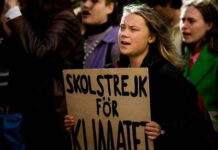The alert was given by the International Energy Agency (IEA) in its annual report on the electrification of the park. With 6.6 million units sold worldwide in 2021, half of which in China, sales of electric cars have doubled in one year and now represent 10% of new car sales. They continued to accelerate in early 2022 with two million units sold in the first quarter (75% year-on-year). These sales have been strongly driven by government subsidies, which have doubled in 2021 to nearly €30 billion globally. Manufacturers, for their part, have multiplied by five the number of vehicles available between 2015 and 2021: around 450 electric models are now on sale.
However, tensions over raw materials are likely to slow down this growth. “Governments, industry and investors must remain vigilant and creative to avoid critical mineral supply problems,” IEA Executive Director Fatih Birol said in a statement. These minerals are mined mainly in countries like Australia, Chile or the Democratic Republic of Congo. But China produces three-quarters of lithium-ion batteries, the dominant technology, and controls more than half of the processing and refining capacity for lithium, cobalt and graphite.
Lithium needs are particularly critical, according to the IEA: they are expected to increase sixfold by 2030, to 500 kilotonnes, requiring the opening of 50 new mines. Europe produces a quarter of electric cars, but controls very few raw materials, just like the United States. “The European and American governments have made strong commitments to develop battery production capacities, but the majority of the supply chain is expected to remain Chinese until 2030”, underlines the IEA.
Alternative battery technologies, recycling, but also incentives to buy smaller cars could help save these minerals. In the short term, sales could also be hampered by rising prices for raw materials used in batteries, as well as logistical problems linked to the war in Ukraine and the Covid-19 confinements in China. The IEA recommends increasing taxes on thermal vehicles while gradually reducing subsidies for the purchase of electric vehicles. The agency also recommends extending these programs to trucks and buses but also to developing countries, and supporting them by developing charging networks.


















